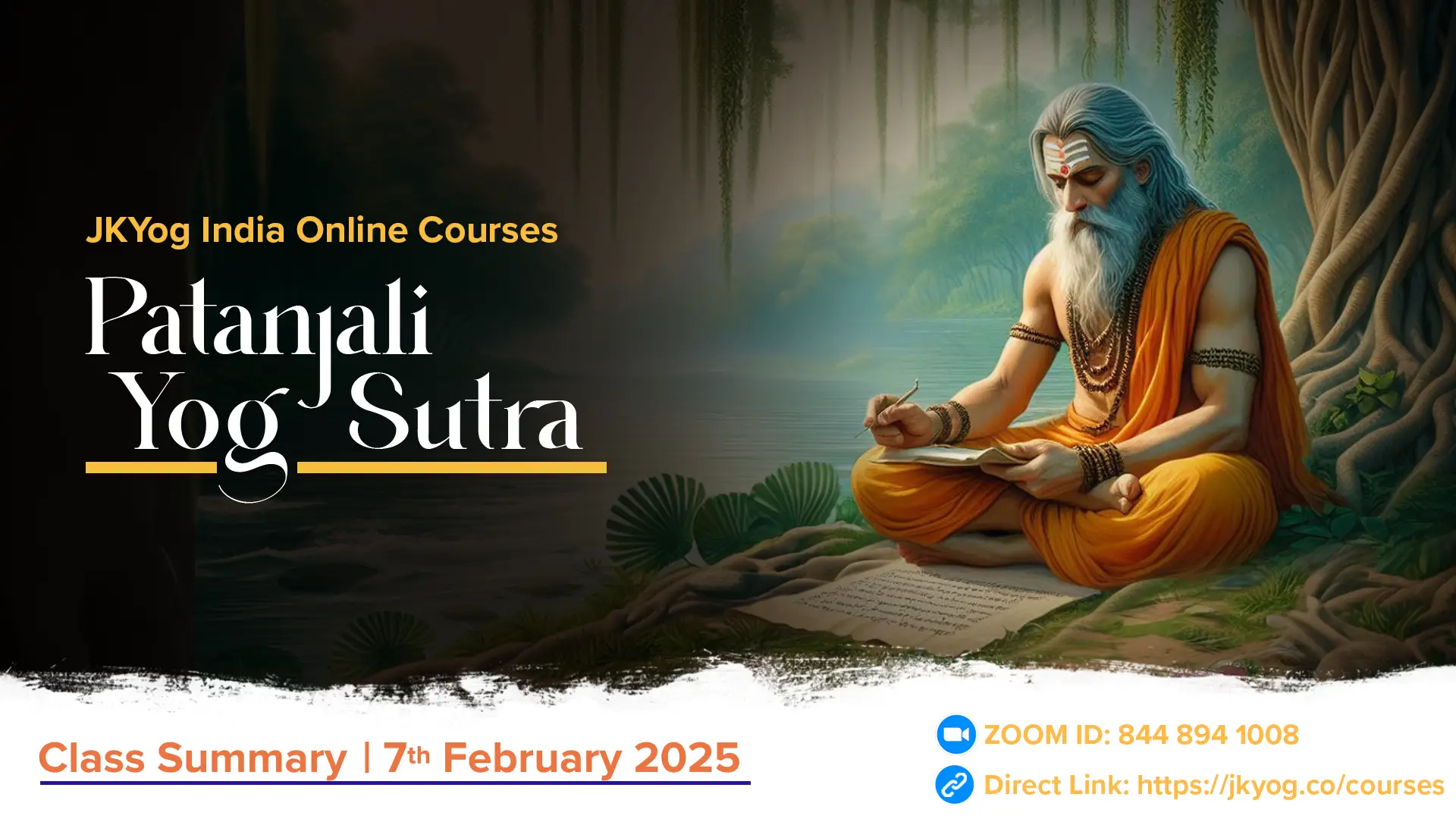तदेवार्थमात्रनिर्भासं स्वरूपशून्यमिव समाधिः || 3.3 ||
tadevārthamātra-nirbhāsaṁ svarūpaśūnyamiva samādhiḥ || 3.3 ||
Translation :
When, in meditation, the true nature of the object shines forth, without the interference of the view of the observer, then we have samādhi or cognitive absorption.
The object, the perceiver, and the act of perception.
The concept of samādhi is explained in this aphorism. When we see a thing, three concepts are involved. They are the object, the perceiver, and the act of perception. In the act of perception, we always superimpose our idea of the object on the same. This can be clearly explained in the context of a wrong cognition like seeing a serpent on the rope.
On account of our own preconceived notions about persons and objects, we fail to realize the truth.
Remove your own impressions of the object
In order to realize the truth, we have to remove our own impressions of the object and remain neutral. One has to be simply a witness to one’s own thoughts and not draw any conclusions out of them.
Roop Dhyan Meditation
The sūtra refers to meditation on a single object without putting the thoughts on it. It is rather difficult. Instead, a novel method is suggested by Jagadguru Shree Kripaluji Maharaj. It is called Roop Dhyan Meditation.
We may view it with a brief introduction. Modern scientists estimate that we use only three percent of the potential of our mind. At present, our mind is scattered. Just as if the channel button of a television set is spoilt, the channels keep changing sporadically. Similarly, our mind too keeps flitting from topic to topic. But if we can learn to concentrate our mind, we can increase the extent to which we are able to utilize its potential.
Purify the mind
Water vapour keeps rising from lakes, and ineffectively drifting in the sky. But the same water vapour, when concentrated in the form of steam and focussed on the piston of the railway engine, becomes so powerful that it is able to push the engine along with thousands of tonnes of carriages at the speed of hundreds of kilometres on the railway track. Similarly, an unwavering mind has tremendous powers. This is the reason why different people in different cultures around the world use a variety of meditational techniques to improve their concentration.
Some meditate on the breath, others on the centre of the eyebrows, others on the psychic centres in the spinal cord, others on a still lake, and still others on a light, etc. These different meditations do improve the focus of the mind.
However, their benefits are incomplete and impermanent. The reason is that they do not address the issue of purification of the mind which is fundamental to meditation. As long as lust, anger, greed, envy, illusion, etc. reside in the mind, there cannot be purity in the mind. These forces again destroy the gained concentration. It thus becomes vitally important to understand how to purify the mind.
How can we cleanse the mind?
To cleanse the mind, we must fix it on an object of meditation that is itself pure. The material realm is dominated by the three modes of material nature—sattva, rajas, and tamas (goodness, passion, and ignorance). If the object of meditation is material, it cannot purify the mind. Beyond this material realm, is the Divine realm of God—His Names, Forms, Virtues, Abodes, Pastimes, and Saints. If we fix our mind anywhere in this area, it will become pure.
Once the mind is pure one can go into the samādhi state.
Hence in Jagadguru Kripaluji Yog, we learn to meditate on the Names, Forms, Virtues, Pastimes, Abodes, and Associates of God. Meditation on God can be of endless varieties.
Meditation on God purifies the mind. Once the mind is pure one can go into the samādhi state.
The three, Dhāraṇā. Dhyāna and Samādhi form one unit
The three, Dhāraṇā. Dhyāna and Samādhi form one unit as will be explained in the next sūtra. One may slip from the samādhi state now and then but the person will not slide to abysmal depths. At worst he may come down to the dhāraṇā from where he can climb back to the samādhi again.
Let us deep dive into this divine wisdom in our upcoming classes.
Summary: JKYog India Online Class- Patanjali Yog Sutra [English]- 28.11.2024








